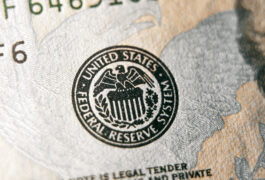Today’s Reflection
The price of gold has recently declined from its peak as President Joe Biden expressed confidence in avoiding a government default. This comes amidst progress in debt ceiling negotiations, positive US economic data, and hawkish statements from some members of the Federal Reserve. Currently priced at around USD 1,975 per ounce, gold is approximately 4% lower than its highest point this year. Despite this decline, the precious metal is still up 8.2% since the beginning of the year. We anticipate that gold will surpass its all-time high later this year due to various medium to long-term factors.
Continued strong demand from central banks is expected
In 2022, global central banks purchased a record-breaking 1,078 metric tons of gold, marking the 13th consecutive year of net gold purchases. This significant increase from 2021’s 450 metric tons suggests a sustained trend. Based on data from the World Gold Council for the first quarter of 2023, central banks are projected to buy approximately 700 metric tons of gold this year. This exceeds the average amount purchased since 2010, which was below 500 metric tons. Geopolitical risks and rising inflation are likely to contribute to the continuation of this trend. Notably, the freezing of Russian foreign exchange reserves by the US following the war in Ukraine may have a long-term impact on central bank behavior.
The depreciation of the US dollar supports the value of gold
The Federal Reserve’s indication of a pause in its tightening cycle after 500 basis points of rate hikes over the past 14 months suggests a weakening dollar. In contrast, other major central banks are still focused on combating inflation. With European Central Bank President Christine Lagarde’s statement that “there was more ground to cover,” we anticipate that the reduced US yield carry will continue to exert downward pressure on the greenback. Gold has historically performed well when the US dollar depreciates due to their strong negative correlation. As such, we expect another round of dollar weakness in the next 6-12 months.
Increasing risks of a US recession may lead to safe-haven investments in gold
While US retail sales rebounded in April and new home starts increased, a decline in building permits indicates a potential slowdown in construction activity. Overall, recent US data suggests a deceleration in economic growth, with weaker-than-expected first-quarter GDP, six consecutive months of contracting manufacturing activity, and the lowest consumer sentiment since November. Tighter credit conditions, as evidenced by the Federal Reserve’s latest Senior Loan Officer Opinion Survey, are also likely to hamper growth and corporate profits. Historical data since 1980 demonstrates that gold has notably outperformed the S&P 500 during US recessions. Therefore, we maintain our expectation that gold will reach USD 2,100 per ounce by the end of the year and USD 2,200 per ounce by March 2024.
We continue to rate gold as our preferred investment choice and maintain a positive stance on commodities as a whole. Considering gold as a hedge within a portfolio context is advisable, as our analysis suggests that allocating a mid-single-digit percentage to gold in a balanced USD-based portfolio would have enhanced risk-adjusted returns and mitigated losses throughout recent decades.




